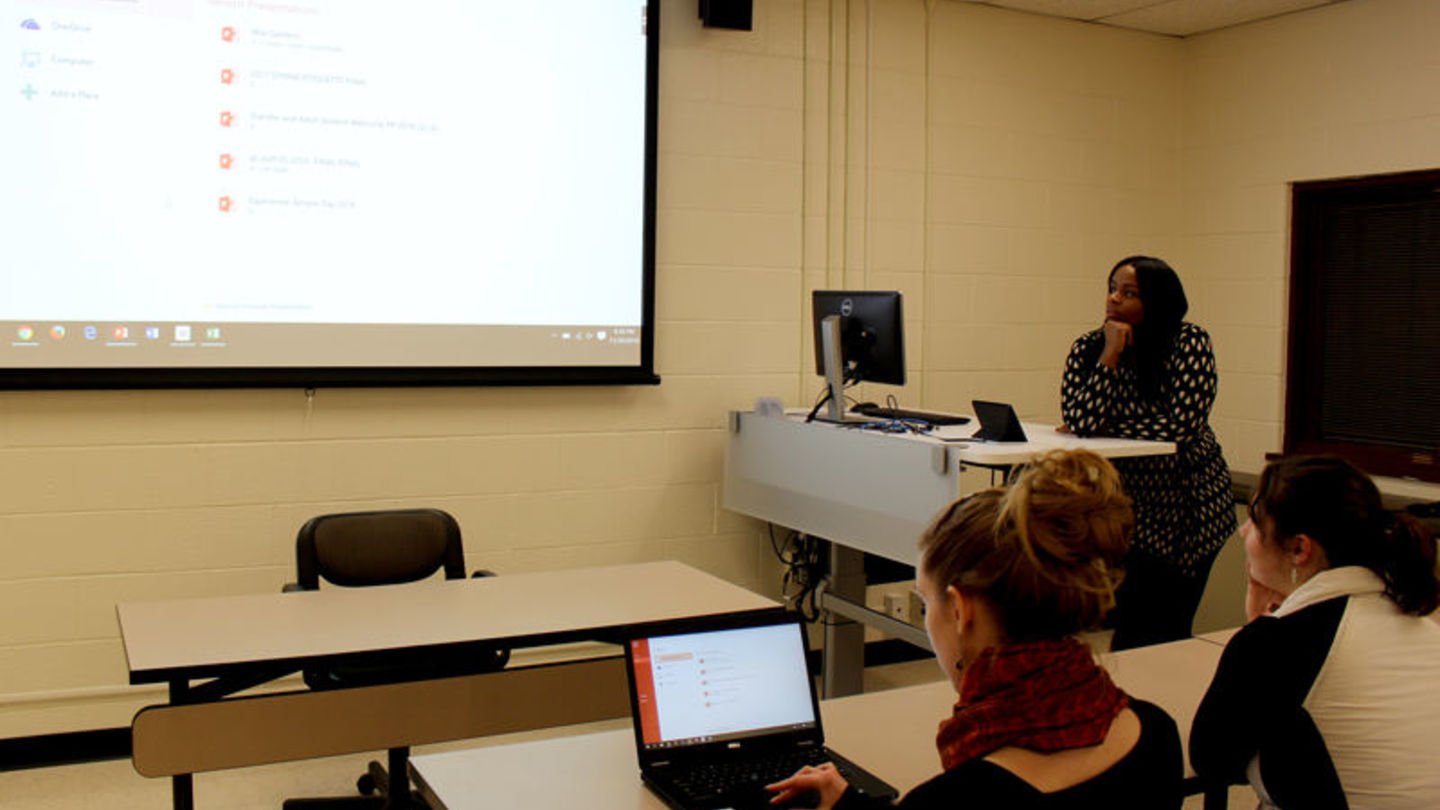
A group of four students gets ready for a presentation to their class. Each of them has their part of the project on their own devices — laptops, an iPad, and Android tablet. When the time comes to share their findings, they are all able to seamlessly show off their hard work on the large projection screen at the front of the classroom.
This level of cross platform integration is now available in two renovated classrooms at Temple University Ambler. Using a combination of Kramer wireless devices and Apple TV, students, faculty and staff have a new multiplatform tool that is perfect for collaboration, according to Reid Overturf, Information Technology Manager at Temple University Ambler.
"We are always striving to make it easier for teachers to use technology in their instruction and to make our technologically-driven spaces more accessible and user-friendly. In Widener Hall, we have two newly renovated 40-seat smart classrooms — both enlarged from smaller classrooms, which were not as efficiently usable for instruction," Overturf said. "Some of the new features in the rooms include ADA-compliant devices, such as electrically controlled height adjustable instructor desks. The key technology, however, is the new devices-sharing features."
Designed to facilitate class collaboration and project work, the technology was first implemented in Wachman Hall at Main Campus in the fall of 2015. Classes such as Introduction to Adult Education; Team Process in Education; Field Research: Practical Professional Settings; and Backpacking and Camping will all be able to access the new features at Temple Ambler during the spring 2017 semester, according to Marcia Whitaker, Assistant Director of Scheduling at Temple Ambler.
According to Overturf, the Kramer wireless presentation and collaboration hub provides the platform for sharing projects on personal computers and most Android devices while Apple TV handles all Apple devices.
"Students and instructors are able to connect to the classroom projector using a secure wireless network with an access code that is generated within the room. You can have six people join a session at once and seamlessly switch between their devices and screens," he said. "It's an excellent tool for working collaboratively while still being able to use the technology that you are most comfortable with. We are currently looking at what we can do with this technology in other locations on campus — student breakout rooms and meeting spaces for faculty and staff, for example."
Temple University Ambler has been on a technological roll beginning over the summer when new technology-supported breakout and meeting spaces, new specialized equipment and new software were implemented on campus.
"Temple has made continued investments in Temple Ambler's technology infrastructure. What drives technology services on campus is ensuring quality student/teacher learning experiences," he said. "We've been able to expand our technology spaces — and the technology available to students — across the board."
More than $100,000 in technology improvements, supported in part by University technology fees, have been made throughout the campus, not including several large expenditures for specialized equipment, such as a $100,000 mass spectrometer for the Department of Landscape Architecture and Horticulture and a $15,000 "Trimble" geospatial data collection device for the Center for Sustainable Communities.
Library Building Room 1 was upgraded to a student breakout room with an 80-inch wall-mounted display. The first floor Learning Center breakout room has also been upgraded with a new 70-inch display. Widener Hall Room 213 was additionally fully upgraded to a student breakout room and faculty/staff conference room with a 70-inch wall-mounted display, Web camera, computer and more.
"This provides students and faculty in Widener Hall a convenient space that can be reserved for project work or student consultations during or after class," said Brent Whiting, Director of Information Systems. "This adds flexibility for staff on campus looking to schedule a technology-equipped meeting space."
